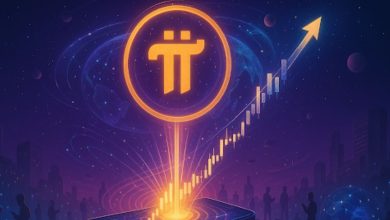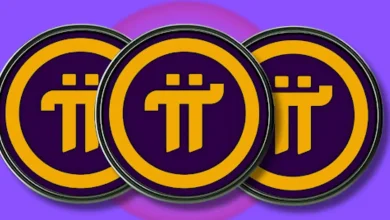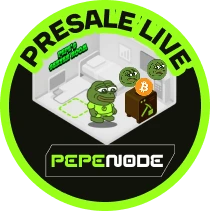Revenue Model Will Cause This Bitcoin (BTC) Alternative To Outperform Ethereum (ETH) and Polygon (MATIC)

Ethereum and Polygon are among the most prominent smart contracting platforms in the cryptocurrency world. These projects run on the Ethereum Virtual Machine and capitalize on the proof of stake (PoS) consensus mechanism to validate transactions and add new blocks to the chain. Polygon is connected to Eth and runs as Ethereum’s largest sidechain. It relieves the latter network from its underlying challenges and limitations. Polygon assembles interoperable blockchain networks that link its ledger with that of Ethereum, hence often dubbed the “Ethereum Internet of Blockchains.” While these two projects remain popular among crypto enthusiasts, a new Bitcoin alternative project called Bitcoin Spark threatens to outperform them.
Polygon and Ethereum staking
Staking involves locking cryptocurrencies for a predetermined duration in exchange for rights to support a blockchain network’s operations. After successfully validating transactions, stakers usually receive returns as their rewards. Ethereum and Polygon validators use this feature to approve transactions and run their individual networks. Polygon validators run full nodes, generate new blocks, and commit checkpoints on the Ethereum Mainnet. In line with staking management contracts on the Ethereum network, these validators must stake Polygon’s native digital asset, MATIC.
Ethereum staking gives multiple options to interested parties. Participants can choose solo staking as a service or pooled staking. Solo staking requires a minimum deposit of 32 ETH, making it unsuitable for small-scale staking participants. Therefore, many opt to stake ETH in pooled funds run by exchanges such as Binance and Coinbase.
Bitcoin Spark Understates Bitcoin Mining
Unlike Polygon and Ethereum, Bitcoin uses the proof of work consensus model to approve transactions on the network. Instead of validators, the Bitcoin network has miners with high-end mining computers who compete to solve complex mathematical algorithms to add new blocks to the network. In return, these miners earn rewards in BTC, the native cryptocurrency of the Bitcoin network. Bitcoin mining requires sophisticated equipment that runs on high amounts of electricity. These factors create a massive entry barrier for participants who want to start mining.
Bitcoin Spark is an upcoming Bitcoin hard fork upgrade that promises to solve these issues. The project uses a new blockchain technological advancement called the ‘Proof of Process’ (PoP) consensus model to approve transactions. This PoP model combines the proof-of-work method, the proof-of-stake consensus mechanism, as well as a unique algorithmic feature to reward both miners and validators.
Bitcoin Spark’s mining feature allows anyone to join the ecosystem’s ethos and start mining BTCS tokens. This is because Bitcoin Spark has low-difficulty mathematical algorithms compared to those on the Bitcoin ledger. However, that will be mined on a mobile device using the Bitcoin Spark mining app. Participants can easily start mining from any part of the world through the mobile app without the need for sophisticated mining equipment and the high cost of electricity involved in mining Bitcoin.
The PoP consensus ensures the network is stable and the mining/validating rewards are dispersed to all network participants (whether small or large) in a standard way. During the distribution, the computing power of the mining device will not affect the rewards received. Additionally, the PoP will also allow the network to ‘rent out’ the mining device’s computational power to third parties dealing with complex commercial virtual activities such as large-scale video coding and servers.
Bitcoin Spark project’s Initial Coin Offering (ICO)
Bitcoin Spark’s tokenomics resemble that of Bitcoin. The project has a maximum supply of 21 million BTCS tokens. Out of this supply, only 21.66% (4.55 million) will account for the launch supply, with 4 million tokens allocated to the project’s Initial Coin Offering (ICO). The price of the project’s ICO phase 1 is $1.50, which will commence on 1st August 2023. All purchases made during this stage are eligible for a 20% bonus on BTCS tokens purchased. In line with staking, Before the project’s official launch, the team will allocate 500,000 BTCS to liquidity pools and exchanges. Contracts on the Ethereum network, these validators are required to stake Polygon’s native digital asset, MATIC. The team will be allocated the rest of the pre-launch supply tokens (50,000 BTCS). The remaining 16.45 million tokens have been allocated to mining rewards ,That is projected to last a minimum of 120 years.
For more information:
Website |
Disclaimer and Risk Warning
The content featured on Coinpedia's press release page is provided for informational purposes only. Coinpedia does not endorse, verify, or take responsibility for the accuracy, completeness, or reliability of any press releases or associated materials. Any views, opinions, or statements expressed in these press releases are those of the respective issuers and do not reflect the opinions or positions of Coinpedia. Coinpedia is not liable for any content, products, services, or actions mentioned in the press releases. Readers should independently verify the information before taking any actions related to the subject matter of the releases.








